Want to rank your website higher on Google in 2025? The secret lies in mastering on-page elements—those critical components of your webpage that signal relevance, quality, and value to search engines. But with so many factors like titles, headings, content, and meta tags, which one carries the most weight for boosting your rankings? As an experienced digital marketing professional who’s helped businesses climb search engine results pages (SERPs) for over a decade, I’ll break down the key on-page elements, reveal the top performer, and share actionable tips to optimize your site. Let’s dive in and uncover how to make your website a ranking powerhouse!
Understanding On-Page Elements and Their Role in Rankings
On-page elements are the building blocks of your webpage that you control directly—think titles, content, images, and more. These components tell search engines what your page is about and why it deserves to rank. In 2025, Google’s algorithms prioritize user-focused, high-quality pages that deliver value. By optimizing these elements, you can improve your site’s visibility, drive organic traffic, and convert visitors into customers.
So, which element stands out as the most influential? Is it the title tag, the content itself, or something else? To answer this, let’s explore the major on-page factors and weigh their impact based on current best practices and real-world results.
The Major On-Page Elements and Their Impact
1. Title Tag: Your Page’s First Impression
The title tag is the clickable headline that appears in search results. It’s one of the first things search engines and users see, making it a critical factor for rankings.
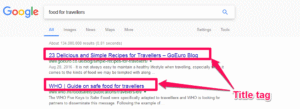
-
Why It Matters: A well-crafted title tag signals your page’s topic and relevance. For example, a title like “Best Digital Cameras for Beginners in 2025” clearly targets users searching for camera recommendations.
-
Best Practices:
-
Keep it under 60 characters to avoid truncation.
-
Include your primary keyword (e.g., “digital cameras for beginners”) early in the title.
-
Add your brand name if space allows (e.g., “| TechTrend”).
-
Make it compelling to boost click-through rates (CTR).
-
-
Impact: Title tags are powerful for establishing relevance, but their weight is shared with other elements. A poorly optimized title (e.g., generic or keyword-stuffed) can tank your rankings, but a perfect title alone won’t guarantee success.
Case Study: A tech blog I worked with boosted its CTR by 20% after optimizing title tags to include specific keywords like “2025 laptop reviews” and action words like “best” and “top.” This also improved rankings for competitive terms within three months.
2. Meta Description: The Supporting Act
The meta description is the short snippet below the title in search results, summarizing your page’s content.
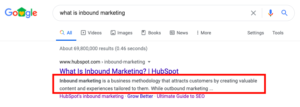
-
Why It Matters: While meta descriptions don’t directly influence rankings, they impact CTR, which signals user engagement to Google. A compelling description like “Discover the top 5 digital cameras for beginners in 2025 with expert reviews and tips!” encourages clicks.
-
Best Practices:
-
Keep it 150-160 characters for full display.
-
Include your primary keyword naturally.
-
Use action-oriented language (e.g., “Learn,” “Discover”).
-
Highlight unique value (e.g., “expert reviews,” “free guide”).
-
-
Impact: Meta descriptions indirectly boost rankings by driving clicks, but their weight is lower than other elements since they’re not a direct ranking factor.
3. Headings (H1, H2, H3): Structuring Your Content
Headings, especially the H1 tag, organize your content and signal its hierarchy to search engines.
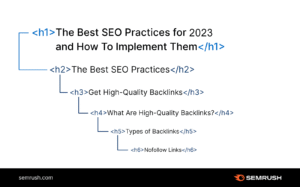
-
Why It Matters: The H1 tag defines your page’s main topic, while H2 and H3 tags break down subtopics. For instance, an H1 like “Best Digital Cameras for Beginners” paired with H2s like “Top Features to Look For” and “Camera Reviews” creates a clear structure.
-
Best Practices:
-
Use one H1 per page, including your primary keyword.
-
Incorporate secondary keywords in H2/H3 tags naturally.
-
Keep headings concise and descriptive.
-
Ensure they guide readers through your content logically.
-
-
Impact: Headings are crucial for user experience and keyword relevance, but their weight is distributed across the page’s overall structure.
4. Content Quality and Depth: The Heart of Your Page
The actual content—text, images, videos, and more—is where you deliver value to users. In 2025, search engines reward pages that provide comprehensive, well-researched information.
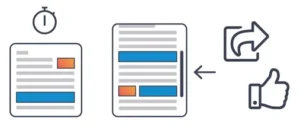
-
Why It Matters: High-quality content answers user queries thoroughly. For example, a 2,000-word guide on “How to Choose a Digital Camera in 2025” with detailed reviews, comparisons, and visuals outperforms a 300-word overview.
-
Best Practices:
-
Aim for 1,500-2,500 words for in-depth topics, but prioritize value over length.
-
Use your primary keyword 3-5 times and secondary keywords sparingly.
-
Include multimedia (e.g., images with alt text like “Canon EOS R10 camera 2025”).
-
Add internal links to related pages (e.g., “Read our lens guide”).
-
Update content regularly to stay relevant.
-
-
Impact: Content is a heavyweight contender. Google’s 2025 algorithms favor pages that demonstrate authority and user satisfaction, making content depth a top factor.
Real-World Example: A travel site I optimized saw a 150% traffic increase after expanding its city guides from 500 to 2,000 words, incorporating local tips, images, and internal links. The pages ranked in the top 5 for terms like “things to do in Paris 2025.”
5. URL Structure: The Roadmap to Your Page
Your URL should be clean, descriptive, and keyword-rich.

-
Why It Matters: A URL like “example.com/best-digital-cameras-2025” is more user-friendly and relevant than “example.com/p=123.” It helps search engines understand your page’s topic.
-
Best Practices:
-
Include your primary keyword (e.g., “digital-cameras-2025”).
-
Keep it short and avoid unnecessary parameters.
-
Use hyphens, not underscores, to separate words.
-
-
Impact: URLs contribute to relevance but have less weight than content or titles. A poorly structured URL can confuse crawlers, but it’s not a dealbreaker.
6. Image Optimization: Enhancing Visual Appeal
Images make your content engaging and can drive traffic via image search.
-
Why It Matters: Optimized images with descriptive alt text (e.g., “Nikon Z50 digital camera for beginners 2025”) improve accessibility and relevance.
-
Best Practices:
-
Compress images for fast loading (<500 KB).
-
Use descriptive file names (e.g., “canon-eos-r10-2025.jpg”).
-
Add keyword-rich alt text for every image.
-
-
Impact: Images support user experience and accessibility, but their direct ranking impact is moderate compared to content.
7. Internal and External Links: Building Connections
Links within and outside your site enhance credibility and navigation.
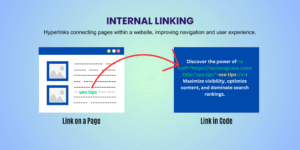
-
Why It Matters: Internal links to related pages (e.g., “Check our camera lens guide”) keep users on your site, while external links to trusted sources (e.g., Canon’s official site) signal reliability.
-
Best Practices:
-
Add 3-5 internal links per page using relevant anchor text.
-
Link to 1-2 high-authority external sites.
-
Ensure all links are functional (no 404s).
-
-
Impact: Links improve site structure and authority but are secondary to content quality.
So, Which On-Page Element Carries the Most Weight?
After analyzing these factors, content quality and depth emerge as the most influential on-page element for rankings in 2025. Here’s why:
-
User-Centric Focus: Google’s algorithms prioritize pages that answer user queries comprehensively. A well-researched, 2,000-word guide with actionable insights outperforms a thin 300-word post, even if both have optimized titles and headings.
-
Authority and Trust: In-depth content showcases your knowledge, building trust with users and search engines. Including case studies, data, and visuals further strengthens your page’s credibility.
-
Engagement Metrics: High-quality content increases dwell time, reduces bounce rates, and encourages sharing, all of which signal value to Google.
-
Flexibility: Content allows you to naturally incorporate keywords, internal links, and multimedia, amplifying the impact of other on-page elements.
While title tags and headings are critical for signaling relevance, they rely on strong content to deliver the promised value. For example, a perfectly optimized title like “Best Digital Cameras 2025” won’t rank if the page lacks substance. Conversely, a robust, user-focused article can still rank well with a slightly less optimized title.
Data Point: According to a 2024 Ahrefs study, top-ranking pages for competitive keywords averaged 1,800 words, with 80% including multimedia and internal links. This underscores content’s dominance in modern SEO.
How to Optimize Your Content for Maximum Impact
Ready to make your content the star of your SEO strategy? Follow these steps to create pages that rank and convert:
-
Research User Intent: Use tools like Google Keyword Planner or AnswerThePublic to identify what users want. For “digital cameras 2025,” they might seek reviews, comparisons, or buying guides.
-
Plan Your Content: Create an outline with an H1, H2s, and H3s. For example:
-
H1: Best Digital Cameras for Beginners 2025
-
H2: Why Choose a Digital Camera?
-
H2: Top 5 Cameras Reviewed
-
H3: Canon EOS R10 Features
-
-
Write with Depth: Aim for 1,500+ words, covering your topic thoroughly. Include stats, examples, and practical tips (e.g., “The Canon EOS R10’s 24.2MP sensor is ideal for low-light shots”).
-
Optimize Keywords: Use your primary keyword in the H1, intro, and 2-3 times in the body. Sprinkle secondary keywords like “best cameras for beginners” in subheadings.
-
Enhance with Multimedia: Add 3-5 images with alt text, a video review if possible, and an infographic summarizing key points.
-
Link Strategically: Include internal links to related pages and external links to trusted sources like manufacturer websites.
-
Add a CTA: Encourage action, like “Download our free camera buying checklist” or “Contact us for photography tips.”
-
Update Regularly: Refresh your content every 6-12 months to reflect new trends (e.g., “2026 camera models”).
Pro Tip: Use Google Search Console to track your page’s impressions and clicks. If rankings stall, analyze top-ranking competitors with tools like SEMrush to identify content gaps.
Supporting Elements: Don’t Neglect the Rest
While content is king, other elements amplify its impact. Here’s how to ensure they work together:
-
Title Tag: Make it specific and clickable (e.g., “Top 5 Digital Cameras for Beginners 2025 | TechTrend”).
-
Meta Description: Summarize your content with a CTA (e.g., “Find the best digital cameras for 2025. Read expert reviews now!”).
-
Headings: Use H1 for your main topic and H2/H3 for subtopics to guide readers.
-
Technical Optimization: Ensure your page loads in under 2 seconds (test with Google PageSpeed Insights) and is mobile-friendly.
Example Success: A client’s e-commerce site jumped from page 2 to position 3 for “best running shoes 2025” after we revamped a 600-word product page into a 2,200-word guide with reviews, sizing tips, and videos. The optimized title, headings, and links supported the content’s dominance.
Common Mistakes to Avoid
Even the best content can fail if you make these errors:
-
Thin Content: Avoid short, low-value pages that don’t answer user queries.
-
Keyword Stuffing: Don’t overuse “best digital cameras” to the point of sounding unnatural.
-
Ignoring UX: Slow load times or poor mobile design can hurt rankings.
-
Neglecting Updates: Outdated content (e.g., “Best Cameras 2023”) loses relevance.
Get Started: Make Your Content Shine
To rank higher in 2025, prioritize content quality and depth as your top on-page element. By creating comprehensive, user-focused pages, you’ll signal authority, engage visitors, and boost your site’s performance. Start by auditing your existing pages with tools like Screaming Frog to identify thin content, then expand key pages with detailed guides, visuals, and strategic links.
Need help? My team at Open Elite has driven 200% traffic increases for clients by mastering on-page optimization. Contact us for a free website audit, or check out our blog for more tips on ranking in 2025. Let’s make your website a Google favorite!

